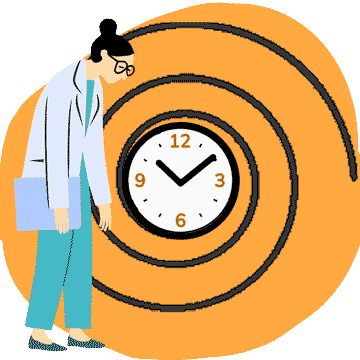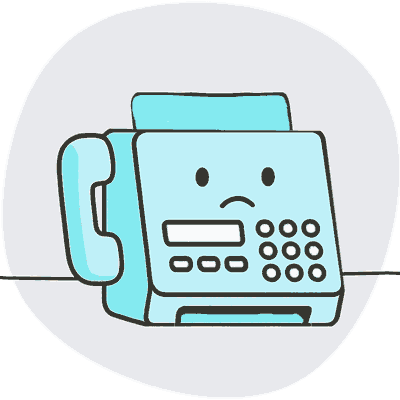How "Fast-Track" UR Can Backfire for CA Providers

California’s “Fast-Track” Utilization Review (UR) initially sounded like good news for doctors who provide the first treatment following a work-related injury. In theory, Fast-Track UR allows doctors to receive payment without the burdensome authorization and UR process that consumes so much practice time and resources.
However, doctors cannot know if a given treatment meets all the criteria for Fast-Track UR before rendering that treatment, opening the door to reimbursement denials. It’s a circular error: Fast-Track UR was designed to ensure reimbursement without the usual authorization process — but the best way to ensure reimbursement is the usual authorization process.
Below, we unpack how Fast-Track UR puts doctors in the difficult position of treating patients with no guarantee of payment — a position many doctors avoid by simply not treating injured workers.
The Fast-Track Flummox
Fast-Track UR is encoded in California Labor Code Section 4610, which declares that treatment is “authorized without prospective utilization review” only if all of the six qualifying conditions below are true. The problem: Four of the six conditions are nearly impossible to comply with, or simply pointless — especially when delivering initial treatment:
1. The treatment is provided within 30 days of the initial date of injury. No problem here. Fast-Track UR was designed to facilitate early treatment.
2. The body part or condition is accepted as compensable by the employer. Big problem here. How can the provider be expected to determine compensability before treating? Fast-Track UR only applies within 30 days of the injury — but the claims administrator has up to 90 days from the reported date of injury to determine liability.
3. The doctor is a member of the applicable Medical Provider Network (MPN) or a physician “selected by the employer.” HUGE problem here. There are thousands of MPNs, and determining MPN membership is extremely challenging for providers.
The MPN system in its current form is simply too complex to be a precondition for reimbursement — which is exactly why California Labor Code dictates that authorization guarantees reimbursement, even when the doctor turns out not to be in the MPN. But under Fast-Track UR, there is no authorization, and therefore no guarantee of payment.
4. The doctor submits a complete RFA within five days of the initial visit and evaluation. Wait, what? Under Fast-Track UR, the RFA requirement is a non-binding formality after the fact. Once treatment is rendered, does it really matter if the employer’s UR organization “approves” the RFA?
Apparently not. §4610(e) states that the only consequence the employer can impose for failing to submit the RFA is to exclude the doctor from future Fast-Track authorization:
(e) If a physician fails to submit the report required under Section 6409 and a complete request for authorization, as described in subdivision (b), an employer may remove the physician’s ability under this subdivision to provide further medical treatment to the employee that is exempt from prospective utilization review. [emphasis added]
It’s an error of circular logic: Fast-Track UR removes the necessity of an RFA — but then requires an RFA to ensure the doctor isn’t abusing Fast-Track UR.
5. The doctor submits the bill within 30 days of treatment. This is wholly unreasonable. This billing deadline is a full 335 days sooner than the doctor has to submit a bill normally. And as noted in condition #2 above, under Fast-Track UR the doctor has less time to submit the bill than the claims administrator has to determine liability (or lack thereof).
6. The treatment is not specifically excluded from Fast-Track UR by the Labor Code. No problem here. Fast-Track UR does not apply to all of the following treatments:
(1) Pharmaceuticals, to the extent they are neither expressly exempted from prospective review nor authorized by the drug formulary adopted pursuant to Section 5307.27.
(2) Nonemergency inpatient and outpatient surgery, including all presurgical and postsurgical services (The Current Procedural Terminology (CPT) designates code range 10004 to 69990 as “Surgery”)
(3) Psychological treatment services.
(4) Home health care services
(5) Imaging and radiology services, excluding X-rays.
(6) All durable medical equipment, whose combined total value exceeds two hundred fifty dollars ($250), as determined by the official medical fee schedule.
(7) Electrodiagnostic medicine, including, but not limited to, electromyography and nerve conduction studies.
(8) Any other service designated and defined through rules adopted by the administrative director.
As we’ll demonstrate with examples in future posts, the impossibility of guaranteeing all the conditions above creates a reimbursement gauntlet for doctors, exponentially multiplying the chances of a payment denial.
The result? Doctors conclude that workers’ comp patients are a financial liability — creating another kind of gauntlet for injured workers.
Bottom line: providers treating newly injured workers should not consider Fast-Track UR as a guarantee of payment.
Protect your practice revenue. Harness the power of daisyBill software, data, and expertise for faster, better workers’ comp billing.
CONTACT US
DaisyBill provides content as an insightful service to its readers and clients. It does not offer legal advice and cannot guarantee the accuracy or suitability of its content for a particular purpose.





